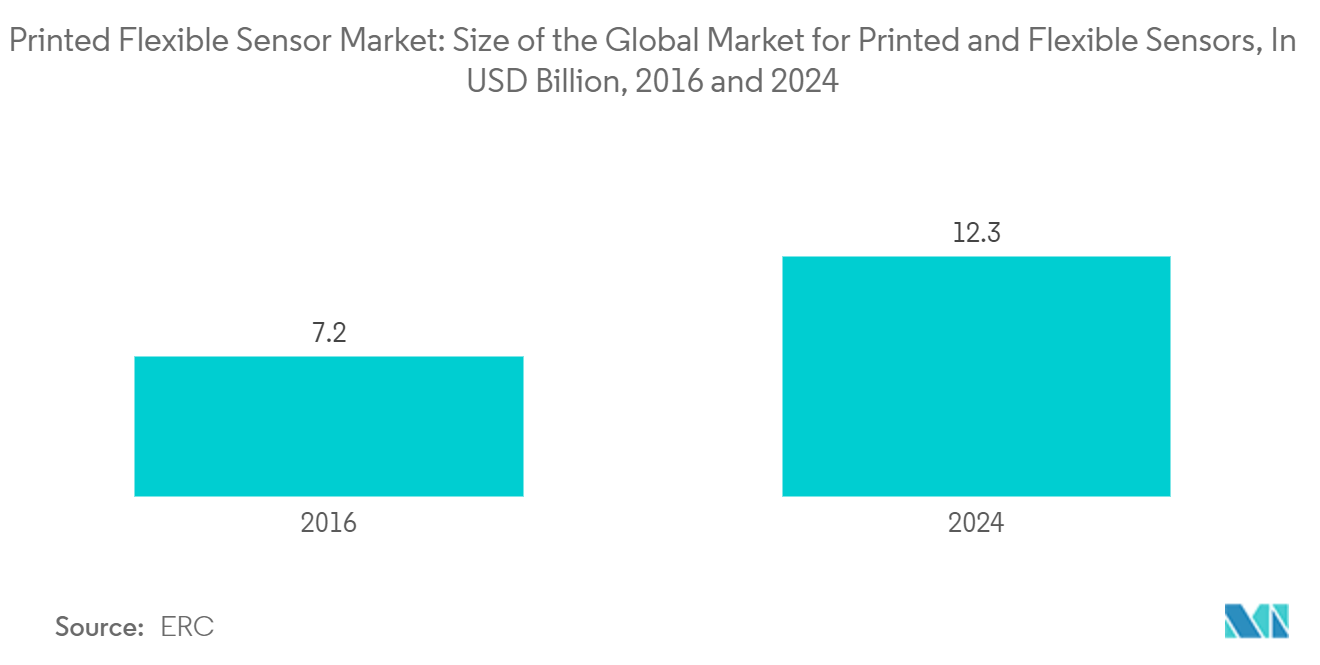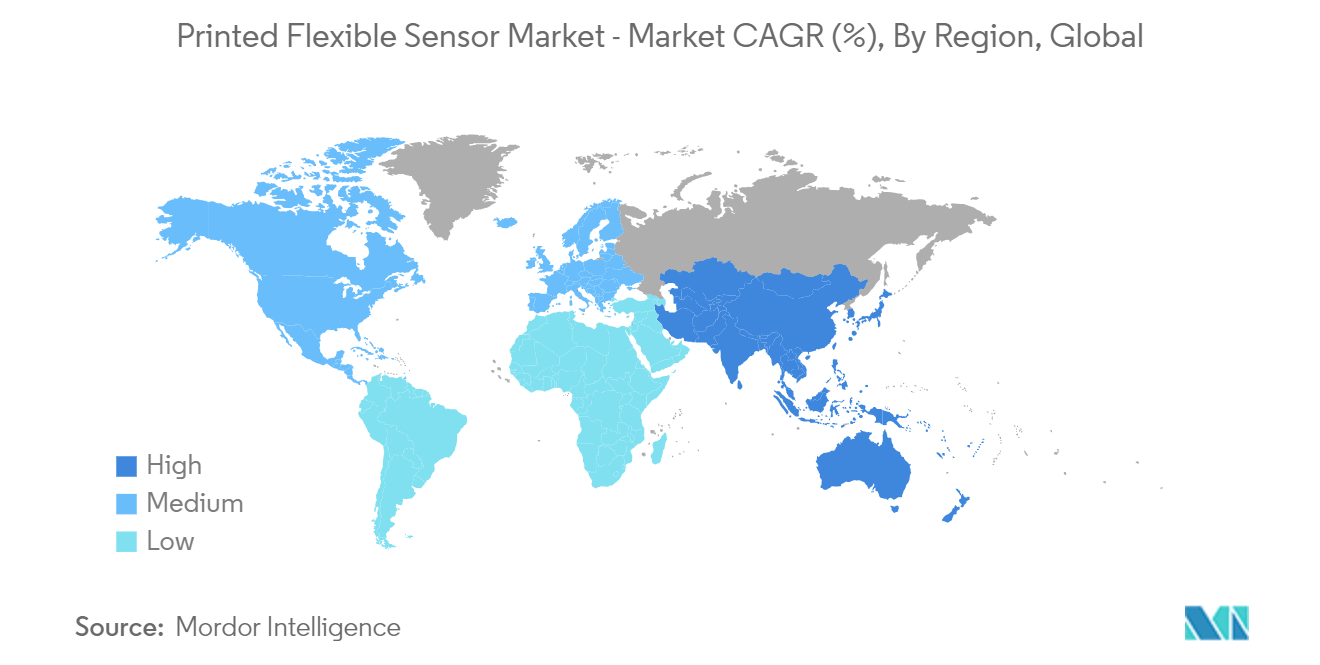Market Trends of Printed Flexible Sensor Industry
The Medical and Healthcare End-user Industry is Expected to Witness Growth
- Printed electronics is an innovative, constantly evolving, and improving technology that has revolutionized the design and production of medical devices and sensors. Advanced printed sensors can sense multiple parameters simultaneously, offering multimodal sensing capabilities. For example, a single sensor can measure temperature and pressure, comprehensively assessing a patient's condition.
- The medical and healthcare end-user industry is one of the prominent consumers of the printed and flexible sensors market. The advent of agile procedures, digital technologies, and seamless techniques in the industry has forced the players to shift their focus toward advanced and smart sensor technology. Printed and flexible sensors are widely used in the industry as they are arranged on a patient's body and can be used to closely monitor the patient's physiological condition. These sensors are used in electronic skin patches to track vital biometric parameters such as heart rate, respiration rate, muscle activity, temperature, and movement.
- Printed and flexible sensors are eco-friendly in nature and have the ability to fit onto various small, differently shaped electronic medical devices. The demand for biosensors is expected to grow in the medical and healthcare end-user industry as they can measure the reaction between a bodily fluid and an enzyme, such as a blood glucose strip for diabetes patients. Moreover, this sensor can be used to gather information from saliva, sweat, and blood. Temperature sensors help detect the change in the electrical signal of the thermos-sensitive material in response to a change in temperature.
- Printed sensors with wireless communication capabilities can transmit real-time data to healthcare providers, enabling remote patient monitoring. This breakthrough expanded the capabilities of telemedicine and improved patient care, particularly in remote or home care settings.
- Printed electronics can be easily integrated with other components, such as microcontrollers or batteries, increasing the overall functionality of printed sensors. This integration enables the development of more complex and versatile medical devices.
- Printed sensors can be designed for both long-term use and single-use applications, the latter of which is widely used in healthcare to reduce the risk of infection and prevent the transmission of pathogens. The materials used in disposable sensors are non-toxic and easily biodegradable, making them cost-effective and environment-friendly.

Asia-Pacific Holds a Dominant Position in the Market
- Asia-Pacific comprises China, Japan, South Korea, Singapore, India, Australia, and the Rest of Asia-Pacific. Asia-Pacific customers are accustomed to utilizing flexible displays, driving the demand for innovative, flexible products, including smartphones, tablets, PCs, and other gadgets. Printed and flexible sensors that can efficiently detect a range of stimuli associated with certain biological or environmental species have gained substantial attention from academics in recent years due to their huge potential for wearable electronics and Internet of Things (IoT) applications. The market is thus expected to grow rapidly during the forecast period.
- Consumer electronics is one of the major end-user industries in the region. The growth of the smartphone industry, the increasing adoption of smart and wearable devices, and the growing penetration of consumer IoT devices are important factors promoting the development of consumer electronics.
- China is also among the major markets for consumer electronics, wherein the proliferation of smart devices is driving the demand for printed flexible sensors. According to the National Bureau of Statistics of China, in November 2023, the country's retail sales revenue for consumer electronics and household appliances stood at CNY 94.61 billion (USD 13.3 billion).
- Flexible and printed sensors have already begun to appear in daily life. For instance, printed aerials for automobiles, smart textiles with pressure sensors to identify seat occupancy, and medical test stripes with diagnostic electrodes are some examples. In accordance with that, researchers at the University of Tokyo developed an optoelectronic skin with an ultra-thin, flexible LED display that can be worn on the back of the hand.
- In automotive, printed sensors are particularly important for monitoring e-mobility and battery status. Also, by integrating pressure sensor films into car seats, artificial intelligence and pattern recognition can be used to distinguish between people and other objects. This driver presence information forms the basis for various safety systems and driver assistance, such as seat belt warnings and emergency call systems in the event of an accident.
- According to data published by the Japan Automobile Dealers Association and the Japan Light Motor Vehicle and Motorcycle Association, in 2023, 43,991 standard-size EVs and 44,544 electric versions of Japan's signature lightweight kei minicars were sold. The ratio of EVs to total car sales was 1.7% for standard-size vehicles and 3.3% for kei cars, up from 1.4% and 2.2%, respectively, in 2022. This increasing adoption trend for electric vehicles will boost the growth of the printed and flexible sensor market in the region during the forecast period.


